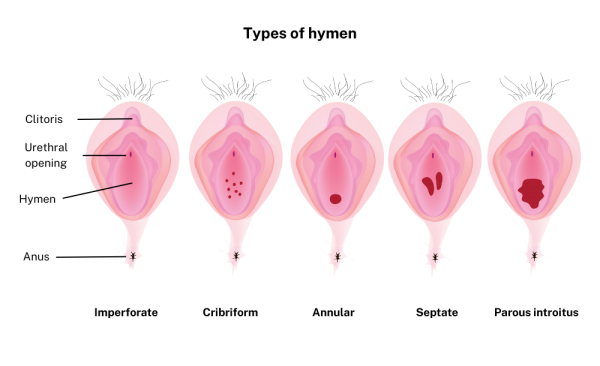The hymen is a stretchy collar of tissue at the entrance to your vagina. It's protected by your labia. It can be compared to a scrunchie (hair tie) – with bunched-up tissue that expands when stretched (eg, during sex or using tampons) then returns to its bunched-up shape afterwards.
Hymens come in many different shapes and sizes. They may have a ring shape, half-moon shape or squiggly edges with notches – all of these are normal. The size of the opening in your hymen also varies in size and shape. There's no need to compare, or worry about whether your hymen fits a certain 'standard'. However, if you have any concerns about pain, discomfort or other issues, it's good to talk to a healthcare provider.

Image credit: Depositphotos
Hymens through history
Throughout history, patriarchal cultures have used the sexual history of girls and women to determine their status and value, as well as the status of their families and communities.
It's wrongly assumed that by looking at the hymen you can prove whether a woman is a virgin often based on the false belief that a ‘broken’ hymen proves sexual activity. Although this ‘virginity-testing’ has been condemned as a violation of human rights, it still continues in many parts of the world today and can be a controversial issue across different cultures and religions. These practices are not scientifically valid and can cause psychological harm. It's essential to understand that a person’s worth is not defined by their sexual history, and everyone has the right to their body autonomy and privacy.






